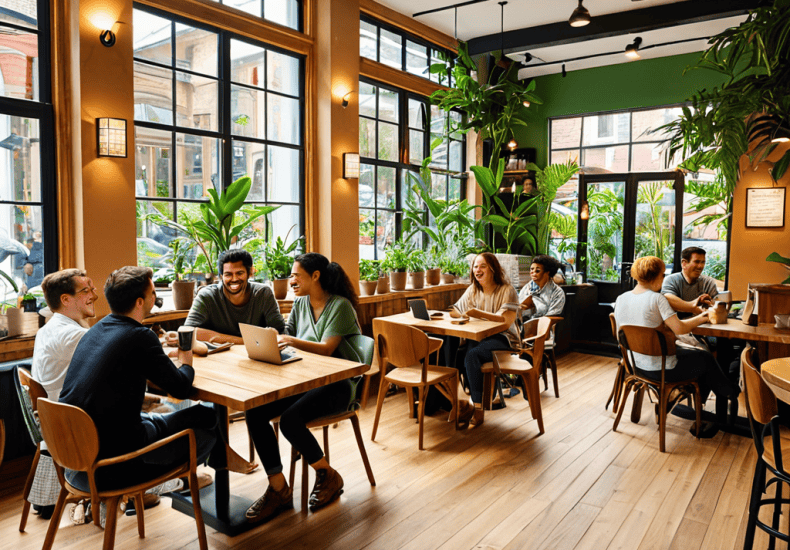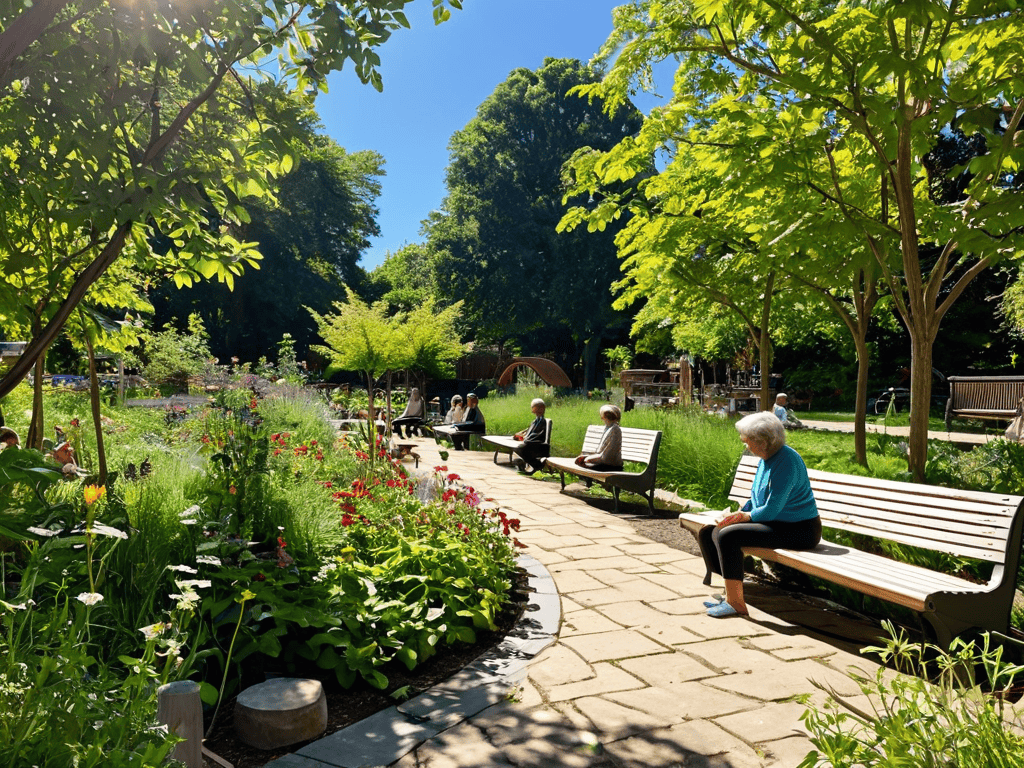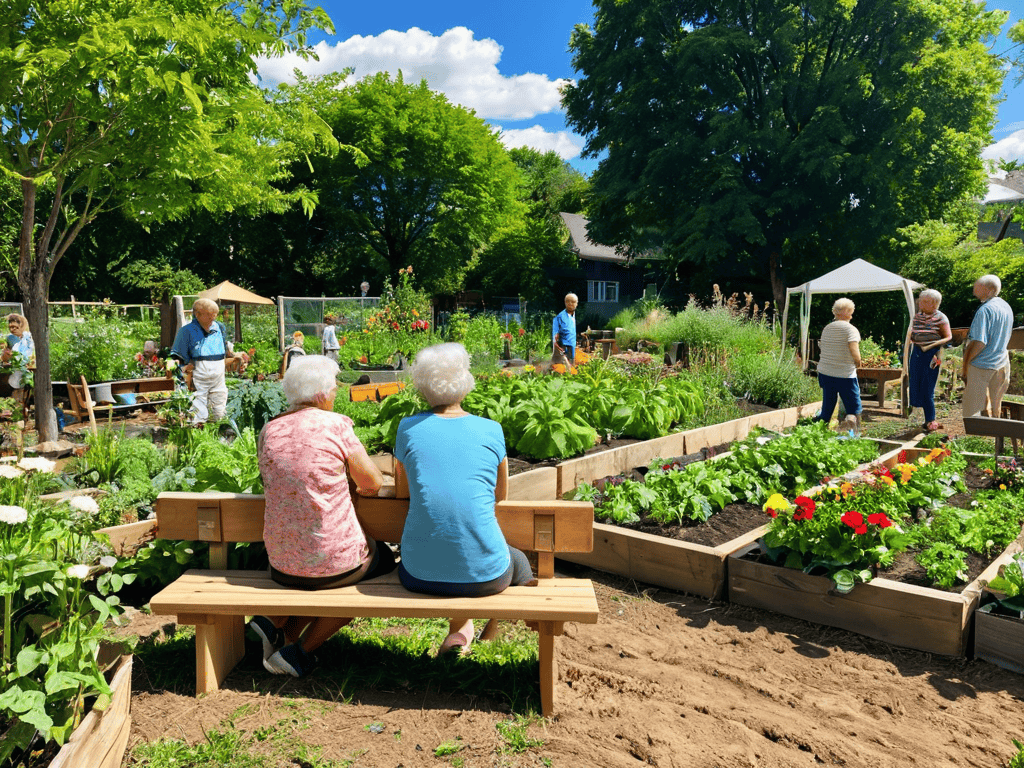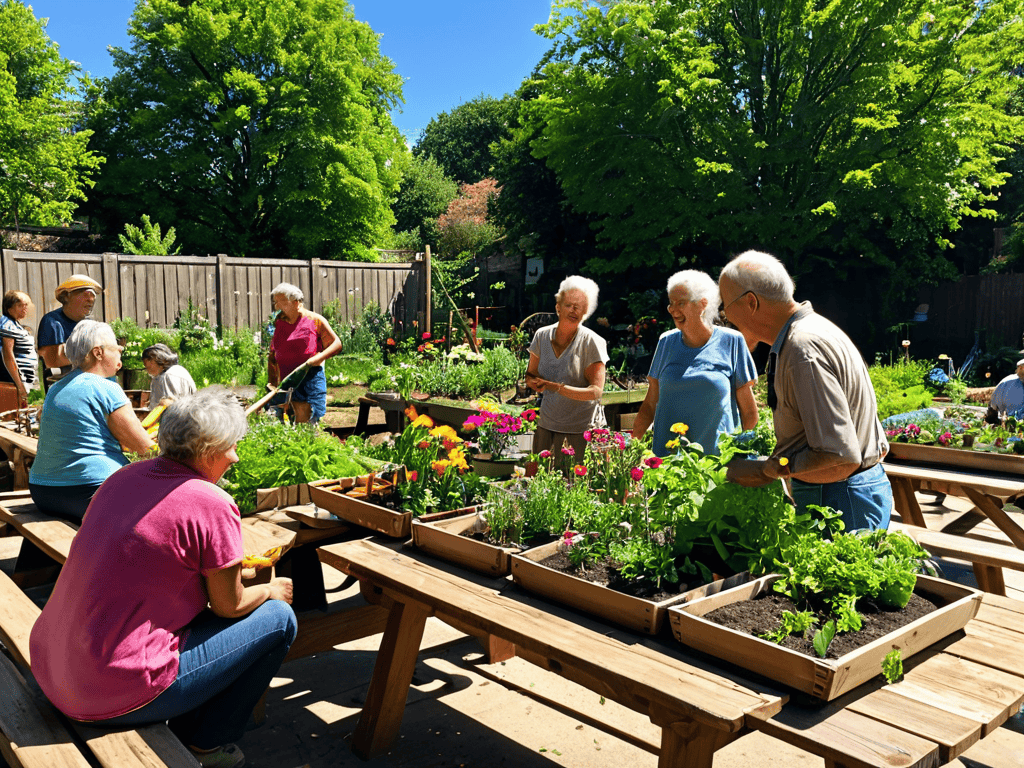
A Guide to Finding Your “third Place” for a Happier Social Life
As I sit in my garden, surrounded by the vintage gardening tools that have become my trusted companions, I often ponder the concept of what is a third place and why it’s vital for your wellbeing. It’s a topic that has been shrouded in complexity, with many espousing the need for expensive, extravagant spaces to fulfill this role. But I’ve found that the truth is far simpler. A third place is merely a spot where we can escape the confines of our daily routines, and nurture our souls. It’s a place where we can breathe, relax, and be ourselves, without the burdens of work or home life.
In this article, I promise to cut through the hype and share with you my personal experiences, and the lessons I’ve learned from my journey. I’ll explore the importance of what is a third place and why it’s vital for your wellbeing, and provide you with practical insights on how to create your own third place, no matter where you are in life. My goal is to empower you with the knowledge and inspiration to cultivate a sense of community, and to find harmony in the world around you. By the end of this journey, you’ll understand that a third place is not just a physical location, but a state of mind, and that it’s within your reach to create a life of intention, growth, and fulfillment.
Table of Contents
- What Is a Third Place and Why Its Vital
- Nurturing Mindfulness in Third Places
- Coffee Shops as Community Builders Tackling Isolation
- Urban Planning for Third Places Harmony in Design
- Cultivating Harmony: 5 Key Tips to Unlock the Power of Third Places for Your Wellbeing
- Embracing the Essence of Third Places: 3 Key Takeaways
- Cultivating Harmony
- Embracing the Harmony of Third Places
- Frequently Asked Questions
What Is a Third Place and Why Its Vital

As I sit in my garden, surrounded by the gentle hum of nature and the soft rustle of leaves, I am reminded of the importance of community hubs in our lives. These spaces, often referred to as “third places,” are neither our homes nor our workplaces, but rather areas where we can connect with others, foster a sense of belonging, and nurture our minds and souls. Just as a well-tended garden requires the right balance of sunlight, water, and nutrients to thrive, our mental health benefits from the balance that third places provide, offering a much-needed respite from the demands of daily life.
In my experience as a life coach, I’ve seen firsthand the benefits of social spaces for mental health. A cozy coffee shop, a vibrant park, or a bustling community center can be a powerful antidote to feelings of loneliness and disconnection. These spaces allow us to engage with others, share stories, and build relationships, all of which are essential for our emotional wellbeing. By designing third places for wellbeing, urban planners and community leaders can play a vital role in promoting mental health and social connection.
As I reflect on the role of third places in my own life, I am struck by the impact of third places on social isolation. In an era where technology can sometimes leave us feeling more disconnected than connected, third places offer a tangible, human alternative. Whether it’s a weekly gardening group or a monthly book club, these spaces provide opportunities for meaningful interaction and a sense of community, helping to combat the alienation that can come from spending too much time alone. By embracing the concept of third places, we can begin to create third places in urban planning that prioritize human connection and wellbeing.
Beyond Backyards Importance of Community Hubs
As I reflect on the importance of third places in our lives, I’m reminded of the countless hours I’ve spent in community gardens, watching how these shared spaces can nurture a sense of belonging and connection among people from all walks of life. It’s a phenomenon that’s beautifully captured in the work of organizations like the American Community Gardening Association, which offers a wealth of resources for those looking to create or join a community garden in their area. For instance, their website, ao sex, provides a comprehensive guide to getting started with community gardening, from finding a plot to building a community around it. By exploring such resources, we can gain a deeper understanding of how mindful community engagement can be cultivated, not just in gardens, but in all sorts of third places, leading to a more harmonious and connected way of living.
As I wander through my garden, tending to each plant with care, I’m reminded of the nurturing power of community hubs. These spaces, often overlooked, are the backbone of our social fabric, providing a sense of belonging and connection that’s hard to find in our increasingly digital lives.
In these community hubs, people from all walks of life come together, sharing stories and experiences that foster empathy and understanding. It’s here that we can truly be ourselves, without the pressures of work or the comforts of home, and find a deeper sense of purpose and meaning.
Designing for Wellbeing the Role of Third Places
As I reflect on the concept of third places, I’m reminded of the serenity that comes with finding a community hub that nurtures both body and soul. Just as a well-tended garden requires the right balance of sunlight, water, and nutrients, our wellbeing thrives when we have access to spaces that foster connection and growth.
In designing these third places, it’s essential to consider the human scale, creating environments that are inviting and accessible to all. By prioritizing elements like natural light, comfortable seating, and engaging activities, we can cultivate spaces that promote mindfulness and a sense of belonging, ultimately enriching our lives and the lives of those around us.
Nurturing Mindfulness in Third Places

As I sit in my garden, surrounded by the gentle hum of nature and the soft rustle of leaves, I am reminded of the importance of community hubs in our lives. Just as a garden requires nurturing and care to flourish, our minds and souls require the nourishment of social connections and meaningful interactions to thrive. This is where third places come in – those beneficial social spaces that provide a sense of belonging and community, helping to alleviate social isolation and foster a deeper connection with others.
In my experience as a life coach, I’ve seen firsthand the benefits of social spaces for mental health. A well-designed third place, such as a cozy coffee shop or a vibrant community center, can become a sanctuary for individuals to relax, recharge, and reconnect with others. By designing third places for wellbeing, urban planners and community leaders can play a vital role in promoting mental health and social cohesion. As I often tell my clients, “A garden is not just a collection of plants, but a web of relationships – and the same is true for our communities.”
As we strive to create more mindful and compassionate communities, it’s essential to recognize the impact of third places on social isolation. By providing accessible and welcoming spaces for people to gather, share, and connect, we can help bridge the gaps between individuals and foster a sense of community building. Just as a vintage gardening tool can be repurposed to nurture new growth, our existing urban spaces can be transformed into thriving third places that promote wellbeing and social connection.
Coffee Shops as Community Builders Tackling Isolation
As I sit in my favorite coffee shop, surrounded by the gentle hum of conversation and the aroma of freshly brewed coffee, I’m reminded of the power of community hubs in bringing people together. It’s here that strangers become acquaintances, and acquaintances become friends, all over a warm cup of coffee. The coffee shop has become a third place where people can escape the confines of their homes and workplaces, and connect with others on a deeper level.
In this setting, I’ve witnessed individuals from all walks of life come together, sharing stories and laughter, and finding a sense of belonging. The coffee shop has become a catalyst for meaningful connections, helping to tackle the growing issue of isolation in our society. As I nurture my own garden, I’m reminded that just as plants require nourishing soil and sunlight to thrive, humans require nurturing environments to grow and flourish.
Urban Planning for Third Places Harmony in Design
As I wander through the city, I notice how thoughtful urban planning can transform public spaces into vibrant third places. The incorporation of green areas, public art, and community facilities fosters a sense of belonging and connection among residents. By designing spaces that encourage social interaction and community engagement, we can create harmonious environments that nurture both individual and collective wellbeing.
In my garden, I often use a vintage pruning shear to illustrate the importance of mindful design. Just as a well-pruned plant can flourish, a well-designed third place can become a thriving hub of community activity. By considering the needs and aspirations of local residents, urban planners can create spaces that not only beautify the city but also promote social cohesion and a sense of community.
Cultivating Harmony: 5 Key Tips to Unlock the Power of Third Places for Your Wellbeing
- Embrace the concept of ‘third places’ as sacred spaces for personal growth and community building, just as a gardener nurtures their garden with love and care
- Design your daily routine to include visits to third places, such as coffee shops, parks, or community centers, to foster social connections and a sense of belonging
- Recognize the importance of intention and mindfulness in third places – just as a vintage gardening tool requires careful handling, our interactions in these spaces require thoughtful engagement
- Seek out third places that align with your values and interests, allowing you to cultivate meaningful relationships and a sense of purpose, much like a tree grows strong when rooted in fertile soil
- Prioritize the creation or discovery of third places in your life, understanding that these environments can serve as powerful catalysts for personal transformation and holistic wellbeing, just as a garden blooms with beauty and life when tended with dedication and love
Embracing the Essence of Third Places: 3 Key Takeaways
I’ve come to realize that third places, like community gardens, serve as vibrant hubs where we can nurture our sense of belonging and grow as individuals, much like how my vintage gardening tools help me tend to my garden with care and intention
By designing and embracing these third places, whether they be coffee shops, parks, or local markets, we can foster a deeper sense of mindfulness and community, which is essential for our overall wellbeing and happiness, just as a well-tended garden brings joy and serenity to our lives
Ultimately, the harmony we find in third places is a reflection of our ability to cultivate balance and intention in our daily lives, reminding us that growth, like a garden, requires patience, nurturing, and a willingness to explore and learn, which is why I’m passionate about sharing the lessons from my garden with others to inspire a more mindful and connected community
Cultivating Harmony
A third place is not just a physical space, but a sanctuary for the soul – where the rhythms of community and nature converge to nurture our wellbeing, reminding us that growth, like a garden, requires intentional care and mindful attention.
Nicholas Griffin
Embracing the Harmony of Third Places

As I reflect on our journey through the concept of third places, I’m reminded of the vintage gardening tool I use to nurture my own garden – a gentle cultivator that helps roots grow deep. Similarly, third places are the cultivators of our communities, allowing us to grow and flourish in ways that might not be possible within the confines of our homes or workplaces. From community hubs to coffee shops, these spaces have the power to foster meaningful connections and a sense of belonging, which are essential for our wellbeing. By embracing the idea of third places, we can begin to see the world as a more interconnected and harmonious whole.
As we move forward, let’s hold onto the idea that third places are not just physical spaces, but also opportunities for personal growth. Just as a garden requires patience, care, and attention to thrive, our lives too can benefit from the same gentle nurturing. By being more mindful of the spaces we inhabit and the connections we make, we can cultivate a sense of inner peace that stays with us wherever we go. So, let’s tend to our gardens, both literal and metaphorical, and watch as the beauty of third places blossoms into a more compassionate, empathetic, and thriving community.
Frequently Asked Questions
How can I identify and create my own third place in a busy urban environment?
For me, discovering a third place is like unearthing a hidden garden – it’s about noticing where you feel most at peace. In a busy urban environment, try exploring local parks, independent cafes, or community centers. Reflect on where you’ve felt a sense of belonging and calm, and nurture that space, just as you would a tender seedling.
What role can technology play in fostering connections and community in third places?
You know, I’ve seen how technology can beautifully bridge gaps in third places, like community apps that organize local events or social media groups that connect people with shared interests, much like how a well-placed trellis can support the growth of a garden, fostering a sense of belonging and harmony.
Can third places be just as effective for introverts as they are for extroverts, and how can they be designed to accommodate different personality types?
As I ponder this in my garden, surrounded by vintage tools that remind me of life’s gentle nurturing, I believe third places can indeed be a sanctuary for introverts, offering quiet corners for reflection and growth, just as they do for extroverts, by incorporating flexible, adaptive designs that cater to diverse personalities.
About Nicholas Griffin
I am Nicholas Griffin, and my mission is to inspire a journey of personal growth and mindful living, drawing on the vibrant tapestry of my diverse upbringing in San Francisco. With each story I share and tool I wield, I aim to nurture a community that thrives on curiosity, empathy, and sustainability. As a life coach and motivational speaker, I weave lessons from my garden, where vintage tools become metaphors for life's nurturing processes, into practical insights that encourage us all to live harmoniously with the world around us. Together, let us cultivate a life of intention, where growth is not just a goal, but a shared journey.
Leave a Reply
You must be logged in to post a comment.